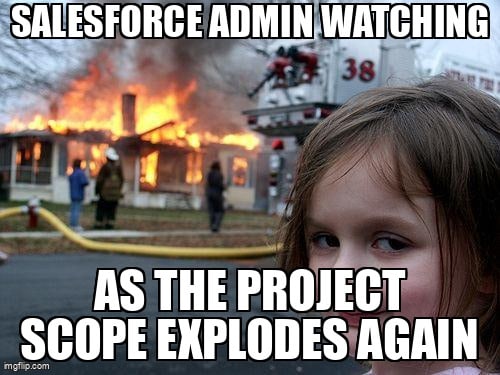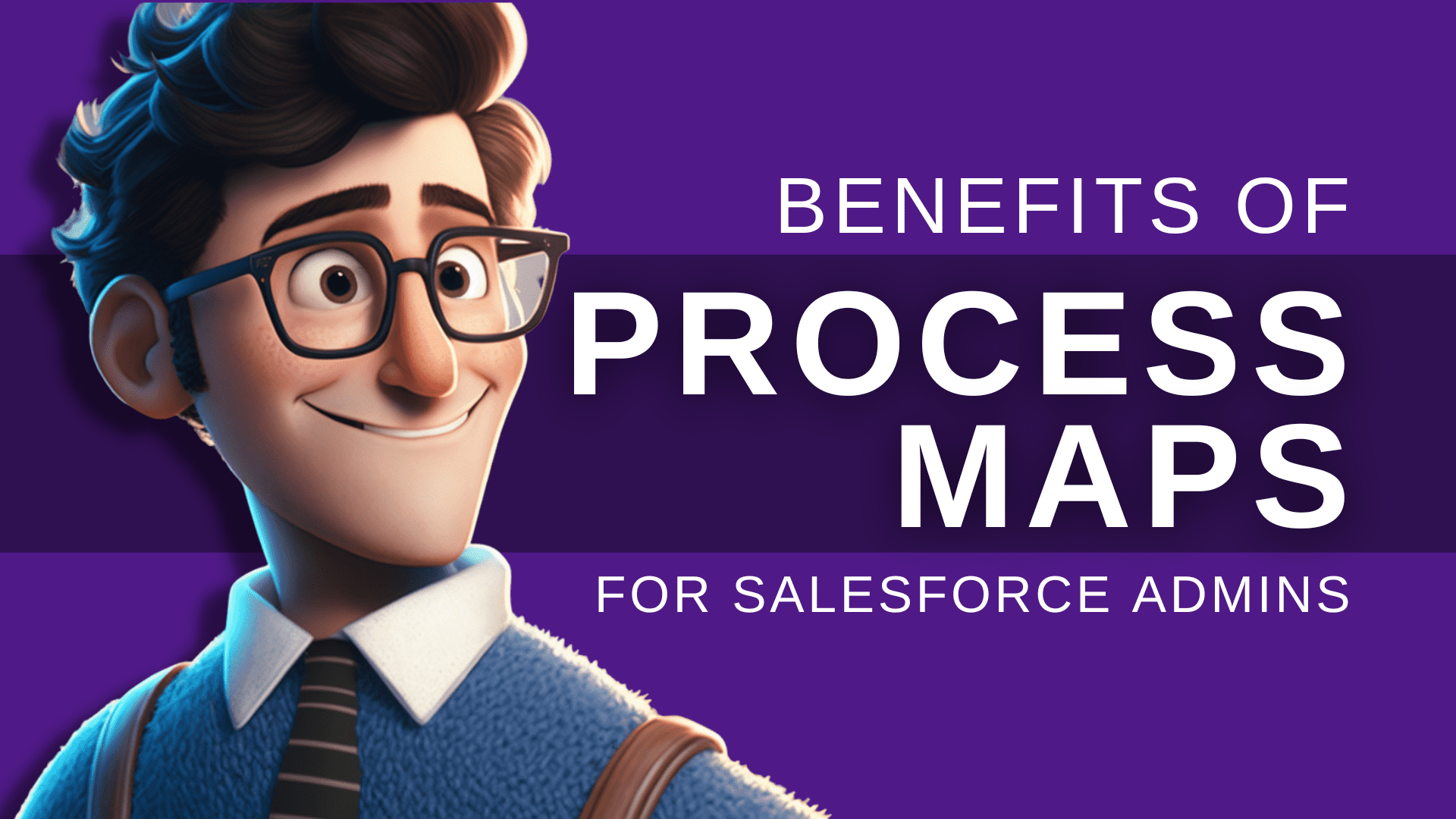Achieving Success: Defining Clear Salesforce Project Goals for Your Team

Setting up effective ‘Salesforce Project Goals’ is crucial for guiding your team towards a successful Salesforce integration and usage.
Which specific goals lead to success, and how do they align with your overall business strategy?
This article focuses on the essentials: identifying strategic objectives, connecting them with your company’s goals, and providing a clear path to making your Salesforce dreams come true.

Key Takeaways
Craft a guiding vision and set clear, achievable project goals aligned with business strategy to ensure a smooth Salesforce implementation.
Involve stakeholders in goal-setting to increase engagement and accountability, and communicate these goals throughout the organization to maintain alignment.
Use a detailed roadmap to prioritize Salesforce implementation phases, adapt goals to evolving project needs, and leverage expert partnerships for guidance and support.
Crafting Your Salesforce Project Vision

Implementing Salesforce necessitates having an established vision to guide your team. This big picture gives direction for the project and provides a pathway from where you are now to what result is desired. Establish goals as well as a timeline that communicates expectations, this assists in mapping out implementation steps without any confusion or wasted effort.
Providing proper training and support while keeping everyone on track through effective coordination with the clear roadmap created by your chosen vision, ensures that all members of the team will have the necessary tools at their disposal during the salesforce implementation process so everything runs smoothly.
Establishing Your Endgame
When it comes to project management, having a clear and well-defined end goal is crucial for a successful Salesforce implementation. It serves as a guiding light, ensuring that every step taken is purposeful and leads in the right direction. This is particularly advantageous for sales teams, as it maximizes efficiency for sales reps and increases adoption rates, ultimately driving success.
To effectively navigate the project management landscape, it is recommended to start by focusing on small, attainable goals that yield quick results for a core business process. By doing so, not only can you gain approval from Salesforce, but you also lay a solid foundation for the overall success of your project. Remember, every milestone achieved brings you closer to your ultimate objective, creating a strong sense of progress and momentum.
In summary, a clear end goal combined with a strategic focus on achievable milestones is the key to effective project management. Embrace this approach, and watch as your sales team thrives and your project reaches new heights of success.
Aligning Goals With Business Strategy
To make the most of your Salesforce project, it’s crucial to align it with your business strategy. This ensures project managers drive a successful implementation that supports your organization’s goals and boosts team effectiveness. Skilled Salesforce Admins can customize the platform to perfectly fit your needs, making the transition to Salesforce seamless and efficient.
By tailoring this powerful platform to your specific requirements, you can fully leverage its capabilities and achieve success in no time. Salesforce integration into your company’s operations becomes a breeze with a customized approach.
Defining Metrics for Success
To define success for a Salesforce implementation project, the whole team must come together and agree on specific, achievable, realistic, and measurable metrics. These indicators, like Performance Test outcomes, Data Quality data, process compliance, and Sales Cycle Time information can help determine user adoption levels and effective use of project management resources. In simpler terms, they show whether we’ve achieved our goal or not!
Involving Stakeholders in Goal Setting

The success of any project relies on the involvement of stakeholders, who play a crucial role like a piece in a jigsaw puzzle. Getting them involved in goal setting fosters better collaboration and communication between all parties involved. Plus, it boosts accountability and enhances decision-making, leading to better outcomes. So, never underestimate or ignore their contribution to projects because it can truly make all the difference!
Identifying Key Stakeholders
Having the right stakeholders on board with your project is like having a compass. These are the people and teams who will be impacted by the outcome and will contribute to its success. It’s important to engage key individuals, such as executives, suppliers, customers, investors, and project managers, who have a vested interest in bringing the project to life!
By involving these key players, we can ensure that everyone’s needs are met and achieve successful business outcomes with higher adoption rates. It also fosters success within each aspect of the project, from coordinating efforts between teams to ensuring customer satisfaction along the way!
Collaborative Goal Formulation
Collaboration is not just important; it is the key to achieving goals, boosting engagement and job performance, and creating a shared sense of purpose within a team. Effective communication, synchronized efforts, and a collective approach are the pillars of successful collaboration. When everyone works together towards a common objective, it not only enhances productivity but also fosters a positive and harmonious workplace atmosphere.
Communicating Goals Across the Organization
It’s crucial to make sure everyone in the organization understands the aim and purpose so that they know what needs to be done to implement Salesforce for the company, and their role in achieving it. If this isn’t clear, it’s like being on a ship without knowing where we’re headed – lots of confusion!
Roadmap to Salesforce Implementation Success

Having a roadmap for Salesforce implementation success is crucial for executing any project. You should have objectives that adapt as progress develops, and make sure to establish milestones and checkpoints. This way, you can ensure a successful launch or adaptation of your projects on the Salesforce platform.
Prioritizing Implementation Phases
When it comes to managing resources like personnel, time, and budget, it’s crucial to prioritize implementation phases. This approach ensures that the most critical aspects of the project receive the attention they deserve, while still allocating enough resources for other stages. It’s like going on a road trip – you can’t visit every place at once, but by prioritizing, you can still achieve great results!
Adjusting Goals as Projects Evolve
When it comes to projects in Salesforce, being adaptable is crucial. As the demands, expectations, and scope change, it’s essential to shift objectives accordingly. It’s akin to adjusting your driving strategy during a trip based on various road conditions.
Just like how you slow down in heavy traffic or take a detour due to road construction, adapting your approach in Salesforce projects ensures successful outcomes and maximizes the value delivered to your customers and stakeholders. So, embrace flexibility and navigate through the dynamic landscape of Salesforce with confidence!
Milestones and Checkpoints
Project milestones and checkpoints play a pivotal role in our project journey. They serve as guiding signposts, meticulously charting our course and ensuring we are steadfastly progressing in the right direction. By setting these markers, we can effectively monitor our progress, identifying both triumphs and challenges along the way.
This enables us to make necessary adjustments, maintaining our momentum and staying within our predetermined parameters. Ultimately, it is through this meticulous monitoring and adaptation that we ensure the resounding success of our project.
The Role of a Salesforce Partner in Achieving Project Goals

When it comes to achieving project success, partnering with a trusted Salesforce implementation partner, like Brainiate, can make a significant difference. Leveraging a partner with extensive experience and in-depth knowledge will help ensure your project is a success at every step of the way, providing expert project management advice and guidance tailored to your specific needs.
Not only will they offer customized solutions to address your unique requirements, but they will also provide unwavering support throughout the entire process as you proceed to implement Salesforce for your company. A trusted partner will demonstrate their commitment to excellence and dedication to your success to ensure that you achieve the best possible results.
By collaborating with a qualified and trusted partner, you will gain access to a wealth of resources and expertise. From comprehensive training programs to ongoing support, you will have all the tools necessary to take your project to new heights and surpass your goals with confidence and ease.
Expert Guidance
When you partner with an experienced Salesforce expert, they can guide you through the implementation process with their knowledge and expertise. Just like a seasoned traveler who knows the best routes and shortcuts, they’ll make sure your organization achieves success.
Tailored Solutions
A Salesforce partner can provide tailored solutions to your organization, designed specifically to meet its individual needs and preferences. With such customized offerings from a trusted source like Salesforce, you are sure that the journey will be enhanced in every way!
Ongoing Support and Optimization
For sales teams, partnering with a Salesforce expert can offer continuous support and guidance in leveraging their Salesforce investment to maximize value for all sales reps on the team. It’s like having a seasoned road trip companion by your side, ready to assist and navigate through any challenges that may arise, ensuring a successful and rewarding journey. With their expertise and assistance, the sales team can confidently steer towards their goals and achieve remarkable results.
Leveraging Tools and Resources for Goal Achievement

When it comes to achieving project goals in Salesforce, having the right project management tools and resources is crucial. It’s like equipping yourself with a versatile Swiss Army knife, ready to assist any traveler.
For example, consider exploring a project management tool like Monday or Asana. These platforms offer a wide range of features that help you stay organized and on top of your project management tasks. Additionally, leveraging a platform like Notion can be a game-changer. It provides an effective way to create a comprehensive knowledge base tailored to your project.
By utilizing these tools, you enable seamless collaboration and easy access to vital information. Harnessing the power of these resources enhances your project management capabilities and drives success in your Salesforce initiatives as a project manager.
Notion: Create a Knowledge Base for Project Documentation
Creating a knowledge base in Notion can revolutionize the way you organize and access your project documentation. Just like a meticulously crafted travel journal preserves your cherished memories, a Notion knowledge base ensures that your project-related information is readily available and easily navigable.
With its intuitive interface and powerful features, Notion empowers you to capture, categorize, and retrieve vital project management details with utmost ease and efficiency. Say goodbye to scattered files and hello to a centralized hub that enhances collaboration and productivity.
Experience the transformative potential of a Notion knowledge base and elevate your project management to new heights.
Managing Multiple Projects and Goals on Salesforce
When managing Salesforce projects, it’s important to use effective prioritization techniques to allocate resources appropriately and monitor progress across all the different tasks. This way, you can successfully juggle multiple initiatives at once without having any of them fall through the cracks.
Project Prioritization Techniques
Prioritizing projects can help ensure efficient utilization of resources by determining which to tackle first, much like choosing the initial stop on a multi-destination journey.
Balancing Resources Across Projects
When allocating resources for various projects, it is similar to packing luggage among a group of travelers – ensuring each project obtains the necessary assistance and consideration. This guarantees that no single undertaking is left without appropriate levels of help.
Tracking and Reporting for Multiple Projects
By keeping an eye on all journeys that are underway, being able to monitor and document the advancement of various projects helps in evaluating success across them as well as monitoring their progress.
Adapting Business Processes for Salesforce Success
To achieve maximum success with Salesforce, it is essential to proactively adapt and optimize your business processes. This involves conducting a comprehensive assessment of your existing procedures and identifying areas for improvement.
By leveraging the power of Salesforce, you can streamline and digitize your workflows, reducing manual efforts and increasing operational efficiency. Furthermore, you may even explore the possibility of automating certain tasks within Salesforce, allowing your team to focus on more strategic initiatives. Embracing these changes will not only enhance your Salesforce experience but also drive significant growth and success for your organization.
Evaluating Current Processes
Examining existing procedures can assist in discovering improvement areas and possible optimization strategies when you are considering how to refine your travel plans.
Designing Salesforce-Centric Workflows
Organizations should design their processes to be compatible with the functions offered by Salesforce as they plan out a journey according to their destination. This allows workflows created for this purpose to harmoniously link up with the platform’s features and capabilities.
Change Management Strategies
For a successful transition of your organization to new processes and workflows, it is advisable to utilize change management strategies. As an agency that assists its clients in adapting their travel plans, implementing such measures will help make the process smoother.
In Conclusion
As we wrap up, it’s clear that setting clear Salesforce project goals, aligning them with business strategy, and involving all stakeholders are crucial steps for a successful Salesforce implementation. Remember, the road to Salesforce success may seem daunting, but with careful planning, prioritization, and the right tools at your disposal, you can navigate this journey with confidence.
Whether you’re starting from scratch or optimizing existing workflows, keep in mind that every step you take brings you closer to achieving your ultimate goal. So embrace the journey, anticipate the challenges, celebrate the milestones, and watch as your sales team thrives and your project reaches new heights of success.
Remember, Salesforce is more than just a tool; it’s a game-changer that can propel your business to unprecedented levels of success. So, buckle up and get ready for an exciting Salesforce journey!
FAQs
What Are the Key Steps to Setting up Effective Salesforce Project Goals?
When you’re setting up effective Salesforce Project Goals, there are a few key steps you should keep in mind. First, craft a clear vision for your project and establish a well-defined end goal. Make sure your project goals align with your overall business strategy and don’t forget to define measurable success metrics. It’s also important to involve all stakeholders in the goal-setting process and create a detailed roadmap to guide the implementation. And hey, if you need some extra guidance and support, partnering with a trusted Salesforce implementation partner can be a game-changer!
How Can Stakeholders Be Effectively Involved in the Goal-Setting Process for a Salesforce Project?
To get stakeholders effectively involved in the goal-setting process for a Salesforce project, start by identifying the key individuals and teams who will be impacted by the project and have a vested interest in its success. We’re talking about executives, suppliers, customers, investors, and project managers.
Now, here’s the important part: let’s collaborate on goal formulation. All stakeholders should work together towards a common objective. It’s all about teamwork!
Lastly, make sure to communicate these goals across the organization. This way, everyone understands the purpose of the Salesforce implementation and their role in achieving it.
What Role Does a Salesforce Partner Play in Achieving Project Goals?
A Salesforce Partner plays a crucial role in helping you achieve your project goals. They bring their extensive experience and in-depth knowledge to the table, guiding your team through every step of the Salesforce implementation process. They provide expert advice tailored to your specific needs and offer customized solutions to address your unique requirements. Plus, they provide ongoing support throughout the process to ensure your project’s success. They are committed to your success and work closely with you to achieve the best possible results. By collaborating with a Salesforce Partner, you gain access to a wealth of resources and expertise that can help you surpass your goals with confidence and ease.
How Can Project Management Tools and Resources Be Leveraged When Managing a Salesforce Project?
Using project management tools and resources can step up your game when it comes to managing a Salesforce project. Platforms like Monday or Asana can help you stay organized and on top of your tasks. And if you create a comprehensive knowledge base in Notion, you’ll revolutionize how you organize and access project documentation. It’s all about making sure that all the important information is right at your fingertips. These tools promote collaboration and make it super easy to find what you need, setting you up for success in your Salesforce initiatives.
What Strategies Can Be Used for Managing Multiple Salesforce Projects?
When it comes to managing multiple Salesforce projects, there are several effective strategies to consider. Firstly, utilizing prioritization techniques is crucial for ensuring that the most important tasks and goals are given the necessary attention. Balancing resources across projects is also key, as it allows for optimal allocation of time and effort.
Additionally, implementing comprehensive tracking and reporting systems enables better visibility and accountability throughout the project lifecycle. Leveraging project management tools like Asana or Monday can further enhance organization and task management, providing a centralized platform for collaboration and progress tracking.
Overall, a combination of prioritization, resource balancing, comprehensive tracking, and leveraging project management tools can greatly contribute to the successful management of multiple Salesforce projects.






